
USA & CANADA (901)
Latest News
When will the coronavirus restrictions end in Canada?
Sunday, 26 April 2020 17:31 Written by theconversation 
Catharine Chambers, University of Toronto
COVID-19 was declared a pandemic by the World Health Organization on March 11, 2020. Since then, many regions around the world — including all Canadian provinces and territories — have declared states of emergency and implemented strict public health measures, effectively putting cities under lockdown.
Canadians for the most part have adapted to this “new normal.” But as many of us are now well into our second month of social distancing, fatigue is setting in. People are grappling with unemployment or reduced work hours and the economy is suffering its worst downturn in decades. It’s not surprising that many people might be asking: When will this end?
There is no easy answer to this question. Despite mathematical projections and expert opinions, the reality is: we don’t know.
Surveillance signals
Global COVID-19 cases now top two million.
But there are promising signs that the public health actions we’ve taken are working. Although cases are still increasing in Canada, they are doing so at a slower rate than two to three weeks ago. Our hospitals and intensive care units are not overwhelmed, as they were in areas such as Italy or New York where interventions weren’t implemented soon enough.
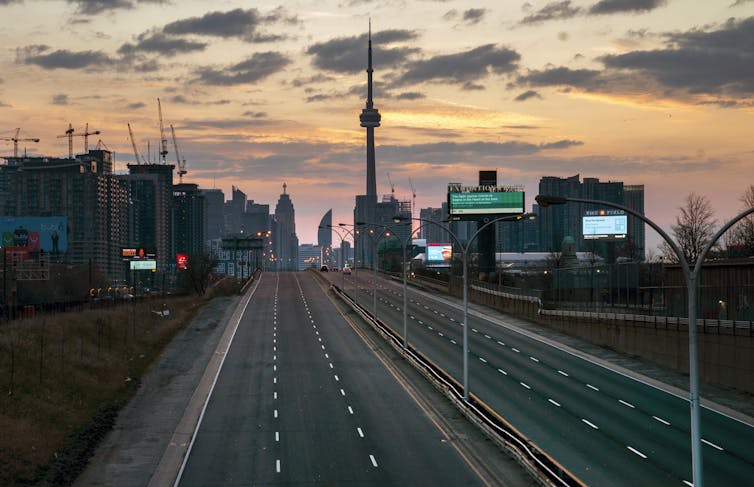
But it’s too early to tell if we’ve reached the peak of the first epidemic wave.
That’s because the surveillance trends we’re seeing today actually represent a snapshot of the pandemic from about two weeks ago. It can take five days on average for someone infected with COVID-19 to develop symptoms, and even longer for someone who is symptomatic to seek health care, get tested and be reported to public health authorities.
On top of that, due to limited testing, reported cases are only the tip of the iceberg of infections in the community.
We will likely need to see a sustained reduction in the number of new daily cases over multiple weeks and consistent trends across multiple data sources before social distancing measures can start to be lifted.
Necessary conditions
But a decrease in the number of new cases will not be enough. Certain conditions will also need to be in place before our public health interventions can start to be relaxed.
According to the World Health Organization, it will depend on a number of factors, including whether the spread of COVID-19 is controlled through population-wide measures like social distancing and whether our health-care systems have the capacity to detect, test and isolate cases and trace their contacts.
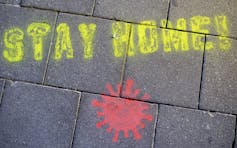
It will require additional measures in place to prevent outbreaks in high-risk settings like long-term care homes where nearly half of all COVID-19 deaths in Canada have taken place. And it will require preventive measures to be set up in essential settings like workplaces and schools along with ongoing efforts to manage risks from imported cases.
Most importantly, it will require community education, engagement and empowerment. It will require striking the right balance between our collective responsibility to prevent the spread of COVID-19 in our communities and an individual’s willingness to engage in social distancing over the long term.
Public health decision-making
This is an evolving situation.
Public health officials are making decisions using the best available evidence about this novel virus and adjusting their strategies as new evidence becomes available.
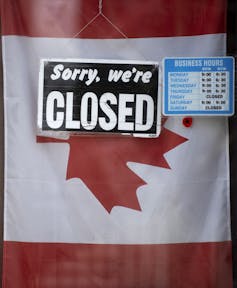
Decisions about when to start reopening society are multifaceted. They should prioritize the health of Canadians while at the same time minimizing the economic and societal impacts of these necessary public health measures.
These decisions should be clearly communicated to the public and based on scientific data, not political rhetoric.
Because of geographic variations in the timing of the pandemic, we can expect that different provinces or countries will reopen at different times — for example, in early hot spots like Spain and Iran where some restrictions are already being lifted, or as recently announced for some parts of the United States.
Another more likely scenario is that these public health interventions will be turned on and off over a prolonged period depending on our health-care system’s capacity to care for the sickest patients at each successive epidemic wave.
Serological tests — which check the blood for antibodies to SARS-CoV-2, the virus that causes COVID-19 — would give us some indication of how many people in the population remain susceptible, which could inform our public health response. Such tests were recently approved in the U.S. and should be available soon in Canada.
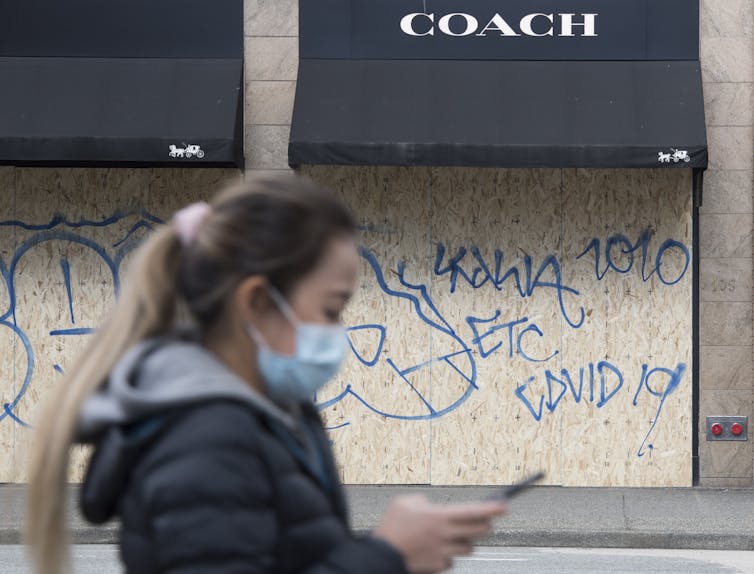
Importantly, while these public health interventions seem as though they came in overnight, there will be a more gradual return to a somewhat normal life. If these measures are eased too fast or too early, we could see a rebound of cases that would again risk overwhelming our health-care systems.
The way forward
So, when will the pandemic end?
We are seeing positive signs of “flattening the curve” for this initial wave in some Canadian provinces like B.C., where social distancing measures may start to be relaxed as early as mid-May. But as with prior influenza pandemics, we might also anticipate a second fall wave or seasonal circulation of COVID-19 since the majority of people are not yet immune.
Read more: When will we return to normal after coronavirus? The data will tell us
The true end to the pandemic will most likely not happen until a vaccine is developed — a scenario that is still at least 12 to 18 months away — or herd immunity is achieved.
Until then, it depends on our collective efforts to physically distance, combined with enhanced testing and contact tracing, to slow the spread. These efforts are difficult, but now is not the time to ease up or begin taking small social risks. Instead, we must listen to the public health experts and work together to reopen society.
Catharine Chambers, PhD Candidate, Division of Epidemiology, Dalla Lana School of Public Health, University of Toronto
This article is republished from The Conversation under a Creative Commons license. Read the original article.
Let's call the Nova Scotia mass shooting what it is: White male terrorism
Saturday, 25 April 2020 01:09 Written by theconversation 
Robyn Bourgeois, Brock University
While the mainstream media has been quick to situate the deadly recent events that unfolded in Nova Scotia within the context of Canadian mass murders, no one seems to be drawing attention to the most prominent link connecting Canadian mass killings: all of the accused perpetrators have been men, and most of them have been white.
White men were responsible for or currently face charges for the mass murders at the École Polytechnique in 1989, Mayerthorpe in 2005, Moncton in 2014, Calgary in 2014, Québec City in 2017, Toronto in 2018 (a van attack) and Fredericton in 2019. Those in Vernon, B.C., in 1996, Edmonton in 2014, and Toronto in 2018 (the shooting in the city’s Greektown neighbourhood) were perpetrated by racialized men.
Given this explicitly gendered pattern of perpetration, why don’t we talk about these mass murders as male terrorism?
When speaking about the mass murder during his regular COVID-19 update on April 19, Prime Minister Justin Trudeau referred to the violence in Nova Scotia as “senseless” and proclaimed that “violence of any kind has no place in Canada.”
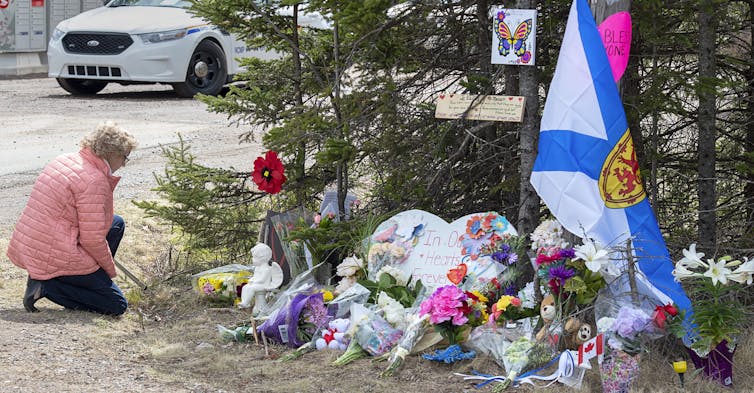
As a survivor of multiple forms of violence with more than 20 years of researching and responding to gender-based violence in my academic and professional career, I beg to differ. Male-perpetrated violence underpins Canadian society and is by no means “senseless” — instead, it serves to reinforce patriarchy and male social domination. The mass shooting in Nova Scotia reportedly began with domestic abuse incident against a woman.
As long as we are unwilling to name, acknowledge and address male violence, the lives and well-being of people in Canada, especially women and children, are at risk.
The normalization of male violence
Regardless of specific motive, the fact that Canadian mass murders have been exclusively committed by men makes this violence explicitly gendered. This is male violence and, as such, must be linked to other forms of male violence and understood as gender-based violence.
While the term gender-based violence primarily implies violence on the basis of gender identity, gender presentation or perceived gender, it also encompasses patriarchy and violence perpetrated by men. In other words, regardless of specific motive, we need to consider these mass murders in relation to patriarchy and male social domination in Canada.
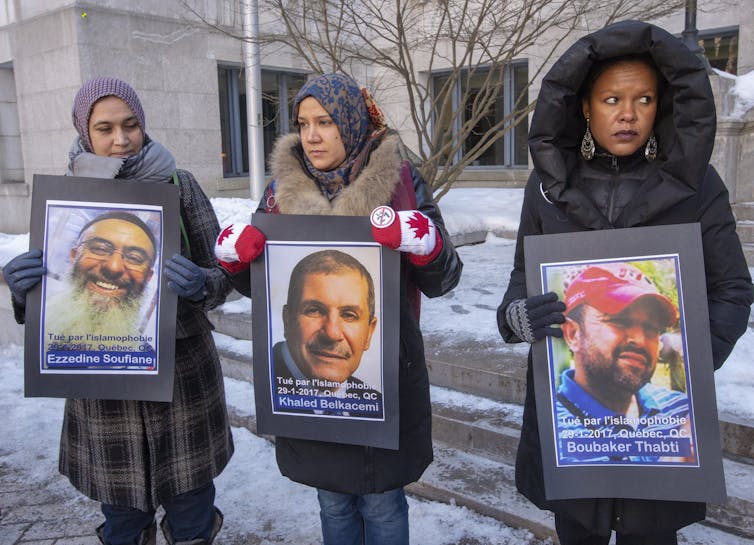
Patriarchy establishes what we refer to as “hegemonic masculinity” — the dominant social definition of what it means to be male, and violence is an essential part of this. In fact, violence plays a fundamental role in securing male social dominance: because patriarchal domination is predicated on unfounded claims to male supremacy, violence serves to reinforce this illegitimate claim to social supremacy by force.

To be a dominant socially acceptable man, then, involves the use of violence and aggression and, from birth, males are socialized into this violent hegemonic masculinity. For example, in addition to action figures of superheroes who regularly use violence to “save” the world, my six-year-old son received two toy guns for Christmas last year.
Patriarchy normalizes this violence by ignoring, exonerating and enshrining the right of men to commit violence. Think of all the times you’ve heard someone dismiss male violence with the phrase “boys will be boys.” This phrase is a tacit acceptance of male violence and the right of men to be violent.
The phrasing is frequently echoed in court cases of young men who have committed sexual assault or murder or both. The perpetrators are portrayed as good boys who simply took things too far. Courts, for their part, are notoriously lenient on male perpetrators of violence, reinforcing the right of men to do violence.
Mass murder is white male terrorism
In addition to being an explicitly gendered crime, mass murder in Canada is also explicitly racialized. The perpetrators are overwhelming white males and we must consider how race, and particularly whiteness and white privilege, operate here.
While hegemonic masculinity and the right to use violence is open to all males, race and racism shape that tendency. To establish white male social supremacy, racist discourses portray all racialized males as inherently violent and a perceived threat, justifying white male violence.
This principle is exemplified in policing and the greater likelihood of BIPOC males to be killed by police. While violence is used to pathologize racialized males and justify social domination and violence perpetrated against them, the violence of white males is justified, excused and erased.
So why are white men more likely to commit mass murder? American masculinities scholar Michael Kimmel suggests that social justice efforts aimed at dismantling the social hierarchies that white men sit atop are creating “angry white men” with “aggrieved entitlement.”
He says: “If you feel entitled and you have not got what you expected, that is a recipe for humiliation.”

As hegemonic masculinity makes crystal clear, if your existence is being threatened you have the right — indeed, in the minds of some mass killers, the responsibility — to use violence and set things right.
Addressing mass murder means taking a hard look at white masculinity and the normalization of violence. It requires that we refuse to dismiss mass murderers as mentally defective or a few “bad apples.” Instead, we must understand that the entire system of white masculinity is rotten. Because until we do, aggrieved white men will continue to commit mass murder and we will all continue to pay the price.
Robyn Bourgeois, Assistant Professor, Centre for Women's and Gender Studies, Brock University
This article is republished from The Conversation under a Creative Commons license. Read the original article.
The need to house everyone has never been clearer. Here's a 2-step strategy to get it done
Saturday, 25 April 2020 01:06 Written by theconversationThe COVID-19 pandemic has shown us our health is intimately connected to the health of the person next to us, and that everyone needs shelter. It has created unprecedented urgency about moving people who are homeless into emergency accommodation – for their health and ours. So what happens next?
Getting people into hotel and motel rooms and off the streets is a good thing, but these are stopgap measures. They don’t provide a home.
Read more: 6 steps towards remaking the homelessness system so it works for young people
The rush to shelter people before the peak of the virus has been driven by a pressing need to protect us all. As the only seven-day-a-week mobile outreach service still operating in Victoria, Launch Housing has temporarily housed 800 people, half of whom were sleeping rough. So what will happen to them and the thousands of other Australians in emergency accommodation when social-distancing restrictions ease and our world returns to something resembling normal?
Will they exit back into street homelessness to become the face of fear and stigma, while the rest of the community returns to more social activities?
A way to find homes right now
Australia has a significant but solvable homelessness problem, so let’s start solving it right now.
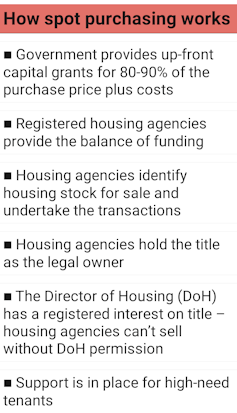
To avoid people being deposited back onto the streets, we’re asking state and territory governments to fund a rapid spot-purchasing program. The Victorian government has done it before on a smaller scale in 2016, and it worked. It’s time to do it again, but on a bigger scale and around the country.
The spot-purchasing program would fund community housing agencies to enter the property market to buy up “distressed” or cheap housing assets. These properties would be let at below market rent to people who pay 30% of their income as a social rent.
Vendors and developers would get much-needed sales and thousands of people would get a home. Taxpayers would get an enduring social benefit for years to come, as expensive nightly motel bills – without any long-term benefit – get converted to community-owned property assets.
We estimate the program would cost about A$210 million in Victoria and a similar amount in other states. It costs more to treat street homelessness than it does to fix it. So, it makes economic and social sense to put the fix in now.
This is our mirror moment. We simply can’t afford to drop people when no one is looking and attention turns elsewhere.
People in emergency accommodation can’t wait years for new housing to be built. They (and we) need those homes now while longer-term solutions are developed.
Meeting rising needs in the longer term
Many people who are not homeless have lost jobs or had their work hours cut, and are facing their first-ever brush with housing insecurity. They are struggling, paying more than 30% of their income for housing.
There was a housing crisis before this latest upheaval, and these conditions haven’t changed. Rents were too high and there weren’t enough affordable homes.
Read more: Growing numbers of renters are trapped for years in homes they can't afford
The health and economic fallout from COVID-19 has exposed the urgent need for more homes that are cheaper to rent for people on moderate, low or no incomes.
Crucially, we are also calling for the Australian government to fast-track the building of more social and affordable housing as part of an economic stimulus package.
A national social housing stimulus package will help get people back to work, speed the recovery, give the building industry the confidence to retain more workers and put roofs over people’s heads.
Read more: Why the focus of stimulus plans has to be construction that puts social housing first
Initiatives to fund the construction of new social housing could be rolled out quickly. The industry capacity is there to do it, in partnership with the community housing sector.
The early stages of the stimulus would bring forward maintenance and new construction projects that are already on the drawing board.
By targeting locations with transport and facilities but high levels of rental stress, new social housing buildings can be built quickly and integrated well into local communities.
The stimulus should be designed to encourage new mixed housing models, including properties that are “built to rent”.
It would increase the supply of social housing for households that are homeless, or at risk of becoming so, and would stimulate the building, maintenance and construction industry.
Read more: Australia's social housing policy needs stronger leadership and an investment overhaul
A building-led recovery
The program would build on the Social Housing Initiative that was launched in response to the 2008 Global Financial Crisis. Some 20,000 new social housing units were built throughout Australia.
This time, we think it is possible to deliver 30,000 new units. Community housing organisations could raise extra private finance to build another 5,000 homes.
We’ll need this social infrastructure more than ever after the pandemic. Rental stress and homelessness are increasing and the lack of low-price rental housing are issues we can no longer ignore.
Read more: Is social housing essential infrastructure? How we think about it does matter
The pandemic has created some very real challenges, but it also creates some unique opportunities to accelerate progress on ending homelessness, to recognise our interconnectedness and to give people the best possible protection of all – a home.
This article was co-authored by Bevan Warner, CEO of Launch Housing.
Ron Wakefield, Professor of Construction, Deputy Pro-Vice Chancellor, International, and Dean, School of Property, Construction and Project Management, RMIT University
This article is republished from The Conversation under a Creative Commons license. Read the original article.
Medical Experts Blast Trump For Suggesting Use Of Disinfectant In Treatment Of Coronavirus
Friday, 24 April 2020 23:58 Written by OASESNEWS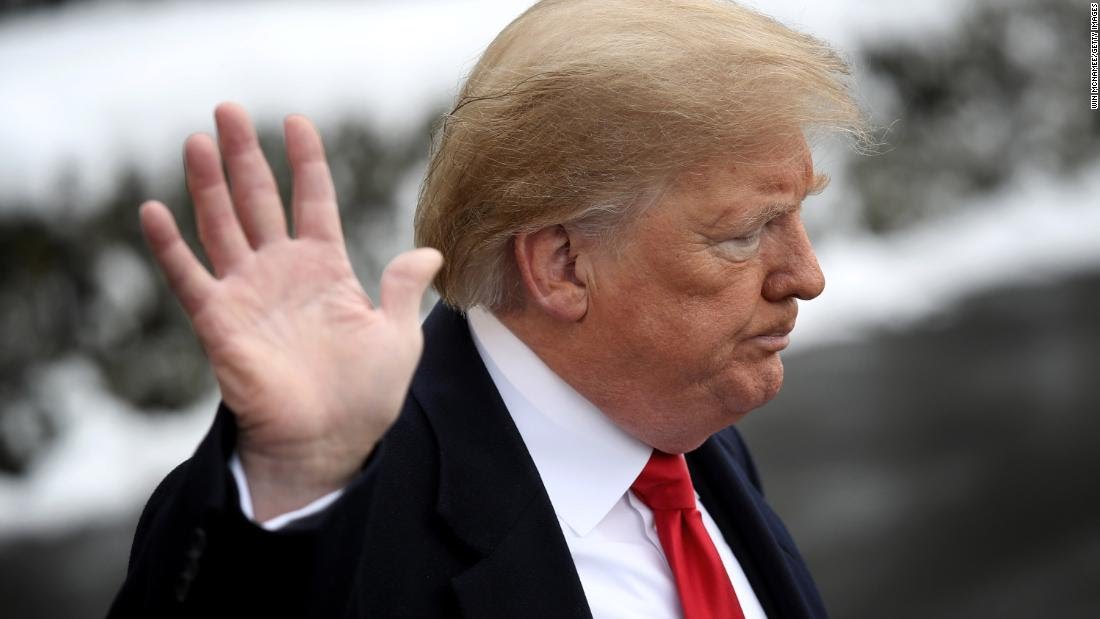
Popular News
Canada must act globally in response to the coronavirus
Wednesday, 22 April 2020 00:57 Written by theconversation 
John D. Cameron, Dalhousie University
As COVID-19 continues to spread in Canada, our attention also needs to turn to the rest of the world to help block the devastating health and economic impacts of the virus in countries with weak public health systems and no social safety nets.
Canada has already pledged $159.5 million to the United Nations COVID-19 Humanitarian Response Plan to support a global medical response to the pandemic.
But the UN is also calling for a US$2.5 trillion rescue package to support countries in Africa, Asia and Latin America that will be devastated in ways that many Canadians can’t even imagine.
At its virtual meeting on April 15, G20 finance officials agreed to suspend debt payments by the world’s poorest countries, sparking a similar commitment from many private lenders. In total, the deal will free up an estimated US$20 billion for developing countries to invest in fighting COVID-19 in 2020.

But much more is still needed. Africa alone may require more than US$150 billion. Many advocacy organizations are calling for the outright cancellation of debt payments by the world’s poorest countries — which exceed spending on health care in 64 countries.
Spending more money on Canada’s international response to COVID-19 will be a hard sell to many Canadians. Online responses to the news stories about Canada’s international response include calls for a “Canada First” approach to ensure that the health care and financial needs of Canadians are met before sending money, medical supplies and personal protective equipment outside the country.
With the federal deficit projected to exceed $184 billion, many voters and MPs may feel that we can’t afford to increase international assistance as well.
These demands to put Canada first will be hard for federal leaders to resist. However, failure to at least slow down the global spread of COVID-19 will not only result in the deaths and increased poverty of hundreds of millions of people in other parts of the world, but may also kill more Canadians as well.
What’s wrong with putting Canada first?
Canada is still confronting the first wave of COVID-19, which makes the Canada first logic tempting. Get the virus under control at home first, and then, maybe, start thinking about how to help the rest of the world.
But there are two major flaws with this approach. First, it’s immoral to value the humanity of Canadians over that of people outside our borders. Second, it undermines the health security of Canadians by allowing the virus to spread further globally and then return to Canada in a second wave, as many health experts are warning.
The UN Secretary General, António Guterres, has repeatedly emphasized: “The world is only as strong as the weakest health system.” The greater the global spread of the virus, the greater the threat to Canadians.
Read more: African countries are behind on progress towards poverty reduction goals
COVID-19 will impact people in developing countries on a scale beyond the worst fears of most Canadians. Many countries have neither functioning public health care systems nor the social safety nets that enable people to stay home from work.
A report from Oxfam points out that for hundreds of millions of people, social distancing and self-isolation are not options. Almost two billion people live on less than US$3.20 per day and scrape by on day-to-day work in the informal economy. If they don’t go out to work every day, their families don’t eat.
A now-unemployed taxi driver in Nairobi, Kenya, told Oxfam: “This virus will starve us before it makes us sick.”
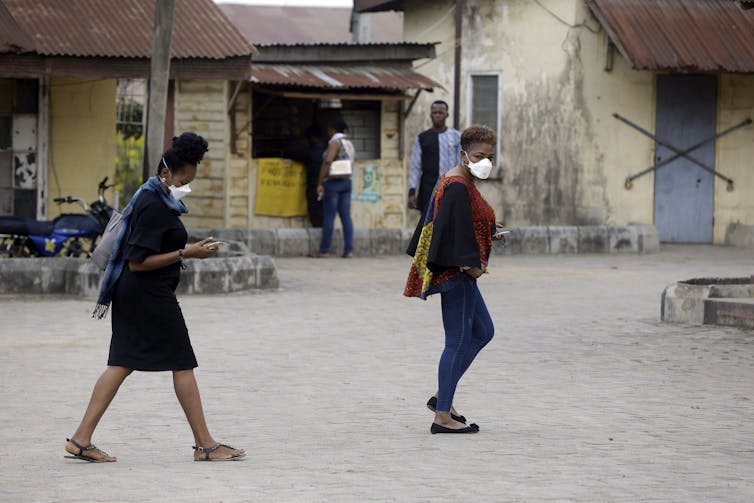
Many governments have implemented harsh penalties to force their citizens to stay at home. But overcrowding and lack of access to running water will make it almost impossible to prevent the spread of the virus in refugee camps and in places like Kampala, Uganda, where over 70 per cent of households live in a single room and only 20 per cent have piped water.
No medical system to help them
For many people who contract COVID-19, there will be no functioning medical system to help them. Ventilators are almost non-existent in much of sub-Saharan Africa. According to Time magazine, Sudan has 80, Zimbabwe has less than 20 and Central African Republic has three.
To help prevent COVID-19 from devastating the developing world, the UN is calling for a $2.5 trillion rescue package to support public health systems and provide financial resources to make it possible for people to stay at home.
Canada’s commitment of $159.5 million to the UN Humanitarian Response fund is an important start, but still represents less than 0.2 per cent of the $107 billion the federal government has committed to domestic responses to COVID-19.
The commitment by the G20 to suspend debt payments in 2020 for the world’s poorest countries is an important step, but Canada and other rich countries will need to commit even more to global efforts to confront COVID-19, especially after President Donald Trump announced that the United States plans to withdraw funding to the World Health Organization — a decision criticized around the world, including by the head of the American Medical Association.
Canadians learned what it feels like to be cut off by other countries that put their own citizens first when Trump attempted to block the export of N95 masks.
The COVID-19 pandemic demands that Canada and other rich countries do all that they can to slow the global spread of the virus — for the health security of people around the world, and for Canadians too.![]()
John D. Cameron, Associate Professor, Department of International Development Studies, Dalhousie University
This article is republished from The Conversation under a Creative Commons license. Read the original article.
Coronavirus deaths in US hit over 41,000
Monday, 20 April 2020 20:57 Written by PM NEWSThe total number of Coronavirus-related deaths in the United States has now surpassed 41,000.
According to Johns Hopkins University, US now has 41,379 Coronavirus deaths.
The US university – which has been tracking the outbreak since shortly after it erupted in China late last year – says there are now more than 746,000 confirmed infections across America, with the New York state being the worst-hit.
On Sunday, protesters took to the streets in states across the US, demanding that governors reopen economies shut by the pandemic.
But the virus has slowed in New York, the epicentre, according to its governor, Andrew Cuomo on Sunday.
The downward trend in coronavirus hospitalisations comes as a welcome relief for New York where nearly 14,000 people have died, including 504 people in the last 24 hours.
“If the data holds and if this trend holds, we are past the high point, and all indications at this point are that we are on a descent,” Cuomo said during his daily news conference.
Cuomo warned that things in his state will not return quickly to pre-pandemic conditions.
“The beast is still alive and the beast can rise up again,” he said, cautioning against easing lockdown measures too soon.
U.S. states are now looking to see when and how they can reopen their economies while preventing a second surge in coronavirus cases.
Governors in several states are saying they worry about reopening their economies from coronavirus shutdowns if testing is still not at the level needed to ensure early identification of resurgent outbreaks.
The lack of testing is “probably the number one problem in America, and has been from the beginning of this crisis,” Maryland Governor Larry Hogan told CNN on Sunday.
Deborah Birx, a key public health official, told CBS the federal government was working to expand testing, conceding that researchers from Harvard University are estimating half a million tests a day are needed to correctly deal with the pandemic.
Vice President Mike Pence said on Fox on Sunday that capacity had reached 150,000 daily tests.
Four Nigerian Students Wanted In Canada For Defrauding Victims $2m In Online Romance Scam (Photo)
Saturday, 18 April 2020 05:02 Written by OASESNEWSRomance scam: Nigerians declared wanted in Canada
One Nigerian student has been arrested and a Canada-wide warrant of arrest has been issued against four others after they allegedly conned victims out of millions of dollars in online romance scams.
The wanted suspects are Kelvin Awani, 24, Jonah Eigbuluese, 22, Joshua Ometie, 25 and Clinton Newton, 27. The four students, alongside Austin Newton, 28, are accused of defrauding victims of over $2 million in the past two years.
Police say the five men were living in Regina during the time. Austin Newton was arrested in January, but the other four suspects could be anywhere in Canada, police say.
The warrants were issued following an 18-month investigation by federal RCMP officers that involved a series of surveillance operations, numerous interviews and the investigation of over 50 Canadian bank accounts.
Austin, who faces numerous fraud-related charges, is scheduled to make his next appearance at Regina provincial court on April 21, 2020.
The Saskatchewan police were struck by the apparent authenticity of these online romances and by the time devoted by the suspects to the people they were victimizing.
Coronavirus: 15-year-old girl commits suicide after 'struggling to cope with the pressure of stay-at-home orders'
Thursday, 16 April 2020 03:30 Written by lindaikejiblogA teenage girl in California died by suicide after she reportedly struggled to cope with the stay-at-home orders amid the Coronavirus outbreak.
15-year-old Jo’Vianni Smith of Stockton was found dead inside her home after she hanged herself last week. A coach at Jo’Vianni's school, Bear Creek High School, told Recordnet that 'the cause of death reportedly was due to the stresses and pressures from coping with the self-isolation caused by the COVID-19 pandemic.' Her mother, Danielle Hunt, also said she believes that stress from the health crisis may have played a role in her daughter's death, according to the outlet. “I felt that I was doing all that I could as a parent to leave the communication open,” Hunt told the news station, adding that “sometimes we may need to stop and worry about the kids that we don’t think we need to worry about,” adding that Jo’Vianni did not leave a note behind. Hunt described her daughter as 'bubbly,' 'loving,' and the light of her world. 'It’s like, how do you explain a girl like her? If you met her one time, like, she made an impact in your life,' she said. Jo’Vianni, a high school sophomore, was also a promising student-athlete, playing softball on travel teams as a catcher and second baseman, sports blog Extra Innings Softball reported. One of Jo’Vianni's former softball shared a heartbreaking note after he learned of her death. 'Her name is Jo'Vianni "Jo" SmithJo was a great athlete... [she] was a bright star with a great personality and a huge heart. and a bright future,' he told Extra Inning Softball. 'It’s been extremely hard to relate to what these kids are going through. I have daily conversations with my 2 high schoolers and encourage them to reach out to their friends and teammates. I can’t imagine what Jo was going through...' The Lodi Unified School District released a statement regarding Jo’Vianni's death. 'We were deeply saddened to learn of Jo’Vianni Smith’s passing. Jo’vianni was well loved by the Bear Creek High community,' the statement read. 'The participated in band, played basketball and softball, and was known for her joyful spirit on campus. She will be dearly missed by those who knew her.' 





